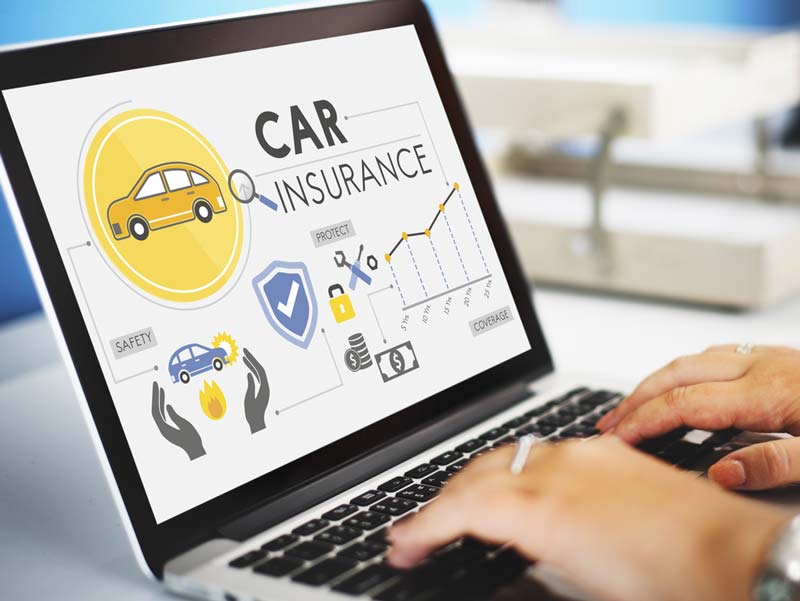If you’re having a hard time finding affordable auto insurance, here’s some strange-but-true advice to solve the problem:
Move and/or pay off your credit cards.
Huh?
What does your home address or spending habits have to do with your car insurance rates? A lot more than you probably suspect.
Car Insurance Cost and Your Zip Code
A new report from the Federal Insurance Office (FIO) found that car insurance is generally unaffordable to 18.6 million people based on where they live.
The “Study on the Affordability of Personal Automobile Insurance” surveyed costs by ZIP codes across the U.S. In 845 ZIP codes, the average car insurance premium was more than 2% of the median household income for residents of that ZIP.
Spending more than 2% of your household income on car insurance qualifies as “unaffordable” by the study’s parameters.
Almost all those ZIP codes had populations comprised mostly of minority groups (Black, Native American, Hispanic, Asian). Almost half of those 18.6 million people live in five states – Michigan, New Jersey, Rhode Island, New York and Delaware.
Consumer groups say unaffordable car insurance feeds the cycle of financial problems. Getting to work requires transportation. Consumers in the affected zip codes have a harder time doing that if they can’t legally operate a vehicle.
Drivers are required to have liability insurance, but studies have shown almost 30 million uninsured people drive U.S. roads. Most of the uninsured say they can’t afford the premiums, which average $982.27 annually in the U.S.
That figure fluctuates wildly from state to state. In 2014, the most recent year data is available, drivers in Maine paid an average of $808 annually. Drivers in Michigan were socked with an average premium of $2,738.
That works out to $228 a month. Drivers in neighboring Ohio pay an average of $77 a month for car insurance. It’s enough to make someone living in a townhouse in Ann Arbor seriously consider moving to a trailer park on the outskirts of Toledo.
The insurance industry collected $199.9 billion in premiums in 2015. It blames the higher premiums in Michigan on high volume and the cost of claims. For instance, vehicle theft rates in Detroit are seven times the national rate.
They say the FIO study didn’t take into account the complex criteria companies use to establish rates. Among those factors is a person’s driving record.
Here’s the rub on that: Driving records don’t matter nearly to the extent most consumers assume.
Your Credit Score Affects Your Rate
You know what does? Your credit score.
Yes, how good you are at debt management can add (or subtract) hundreds of dollars a year on your car insurance bill.
Your accident history definitely plays a role. So does your age, marital status and whether you have teen drivers on your policy, but having a high credit score is the fastest ticket to lowering your insurance rates.
The exact rating formula an insurance company uses is more closely guarded secret than Col. Sanders secret recipe for frying chicken. Your insurance agent could tell you, but then he or she would probably have to kill you.
But a Consumer Reports study in 2015 found that credit scores have a bigger impact than any other factor used by insurance companies.
“If they think that your credit isn’t up to their highest standard, they will charge you more even if you have never had an accident,” the report said.
Credit scores range from 350-800. Anything higher than 800 is excellent, and a score higher than 700 is considered very good. Anything under 600 is categorized as poor or worse. The average FICO credit score in the U.S. is 695 in 2017.
Lenders use scores to determine your credit-worthiness. Higher numbers mean you’re a lower risk and will get more favorable interest rates.
That makes sense when you’re getting a loan to buy a car. But how does a high balance on your VISA account indicate you’re more likely to back your car into your neighbor’s mailbox?
“People with higher credit scores take their finances seriously and usually are good at following rules,” said John Connelly, the agency Director at HUB International Insurance in Clearwater, Fla. “On the other hand, statistics tell us that people with low credit scores are more likely to file an accident claim.
“Insurance companies risk their capital on the people they insure and when they weigh the probabilities, the people with a higher credit score are a better risk.”
In other words, statistics actually show you are more likely to crash your Buick into a tree if you don’t pay your Macy’s bill on time.
Insurance companies did not use credit scores to help determine rates until the mid-1990s. Then they began working with the company that created FICO credit scores to test the theory that bad credit equals a bad insurance risk.
“They kept what they were doing hush-hush,” the Consumer Reports study said.
By 2006, almost every car insurance company was using credit scores to formulate premiums. Consumer advocates said that unfairly affected poor people. In 2007 the Federal Trade Commission said the use of scores “likely leads to African-Americans and Hispanics paying relatively more for automobile insurance than non-Hispanic whites and Asians.”
How much more?
Consumer Reports found that, depending on the state, single drivers with merely good scores paid $68 to $526 more annually than similar drivers with excellent credit scores.
So if you’re wondering why your neighbor with three speeding tickets in the past year has a lower premium than you and your clean record, the answer may well be that your neighbor pays his bills more efficiently.
California, Hawaii and Massachusetts are the only states that prohibit insurers from setting premiums by using credit scores. Rates in those states are based mainly on how people have actually driven and other factors, not on what a credit score predicts might happen on the open road.
The insurance market can be a frustrating mystery to consumers. Companies can raise rates or cancel policies without notice or explanation. Consumers, however, aren’t totally at the mercy of unseen and unpredictable forces.
They can shop around. Websites like TheZebra.com and Insurance.com provide multiple quotes.
Consumers should monitor their credit reports to make sure they are accurate. And probably the most impactful strategy is to improve their credit score.
Among other things, that means paying your bills on time, keeping the amount you owe in line with your income and not maxing out a half-dozen or more credit cards.
That requires planning, dedication and belt-tightening.
If lowering that cost is a goal, increasing your credit score will probably be a lot easier than moving to that trailer park in Toledo.
How to Afford Car Insurance: 5 Tips
If you can’t pay your car insurance, consider these tips:
- Shop around: Get quotes from 3 reputable companies. Let the agents know you are comparing rates.
- Pay off your vehicle and reduce your coverage: financed vehicle have more expensive insurance requirements. If you can pay off your vehicle, you can reduce your coverage to a lower-cost, collision-only policy.
- Call your agent and ask about cost-reduction options which may include taking a safety course, installing technology which measure your driving habits and reward you for certain behaviors, installing a security system, etc.
- Consider moving to a zip code with lower rates.
- Improve your credit score so you qualify for better rates.

6 MINUTE READ
Home » InCharge Blog »
Sources:
- Carnns, A., (2017, January 25). Millions Live Where Car Insurance Is Unaffordable, Study Says. Retrieved from https://www.nytimes.com/2017/01/25/your-money/millions-live-where-car-insurance-is-unaffordable-study-says.html
- (NA), (2015, July 30). The Secret Score Behind Your Rate. Retrieved from http://www.consumerreports.org/cro/car-insurance/credit-scores-affect-auto-insurance-rates/index.htm
- (NA), (2017, January). Study on the Affordability of Personal Automobile Insurance. Retrieved from https://www.treasury.gov/initiatives/fio/reports-and-notices/Documents/FINAL%20Auto%20Affordability%20Study_web.pdf
- (NA), (2017, January). Auto Insurance Database Report. Retrieved from http://www.naic.org/prod_serv/AUT-PB-13_2016.pdf

















